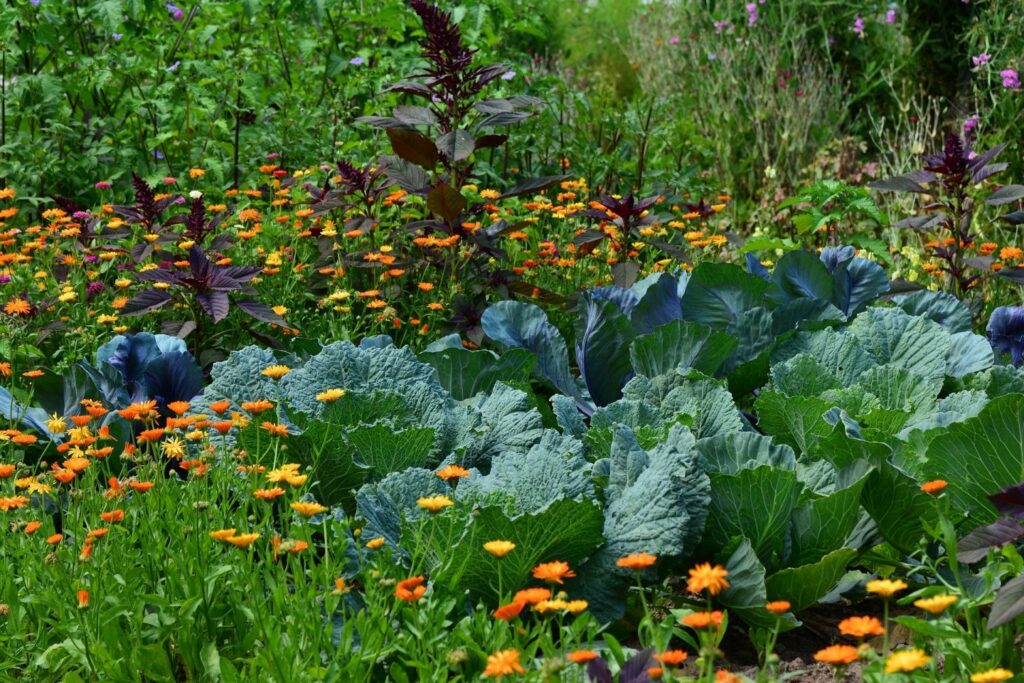Garden Plant That Tastes Good!

Figure of Garden Plant
Garden Plant: Common names can very deceptive. Having a plant’s name in a language they are familiar with is much more comfortable for gardeners than trying to pronounce or even understand a name that is in Greek or Latin. However, using these common names could get you in trouble! For instance. The plant known as “Pineapple Lily” is neither a producer of pineapples nor a member of the lily family. Despite having a more pronounceable common name than its botanical name Eucomis comosa, the plant is not frequently seen in NJ Gardens.

Table of Contents
Garden Plant: The pineapple lily
The pineapple lily, which belongs to the Asparagaceae or asparagus family, is a native of parts of Southern Africa. The 12 species in this genus are all indigenous to wet meadows and grassy areas along or near streams. Charles Louis L’Hertier De Brutelle, a French botanist and magistrate, created the name Eucomis in 1788. (1746-1800). The phrase “good head of hair” refers to the tuft of foliage that is perching atop some of the flower stalks, as seen above on a floral bud of Eucomis “Glow Sticks,” and the name comes from the Greek words “Eu” for “good” and “Kome” for “hair.”
Pineapple Lilies grow from true bulbs, which resemble the sliced-in-half onion bulb in that they are layers of modified leaves. When plant in the ground, comes are zone 7 hardy and usually survives a southern NJ winter, but not a northern NJ winter. Unknowingly. I planted some in a safe, shaded area many years ago, and they consistently grew for many years. Planting them in the shade was a mistake on my part! For the flowers to grow and for the foliage to resist flopping, he plants require full sun. A central flower spike that reaches a height of 24 inches in mid- to late-July is covering in greenish-white, star-shaped flowers that are arranging in a cluster at the top 6 to 12 inches of the stem.
Garden Plant: Flowers of Eucomis bicolor
Although species with green foliage are attractive, the deep burgundy form known as “Sparkling Burgundy” has the added benefit of having purple foliage (pictured below). The foliage of this new plant from Plant Delights Nursery starts out very dark burgundy and changes to a purplish green as flowering approaches. This selection prefers full sun in moist soils, which is typical for the genus. The plants grow quickly, easily reaching 18 to 24 inches tall and a little wider.

They prefer moister summers and drier winters, which is, unfortunately. The opposite of the weather in most of New Jersey and typical of South African plants. Therefore, they need soils that are well-drained and rich in the organic matter if they are to grown outside as perennials in southern and central NJ. Plant the bulbs 5 to 6 inches deep, and if you garden in central New Jersey. Add more mulch in the fall to protect the bulbs from prolonged periods of extreme cold. Consider growing them in containers if you garden in northern New Jersey. In a 10 to the 12-inch pot, plant the bulb tops in the spring or early summer, 1-2 inches below the soil.
The frosted foliage
The frosted foliage should clear away, and the soil should allow to dry and stay dry all winter. Late in March, re-water the pots, and move them outside once the nighttime lows are at or above freezing. To give the roots enough room to spread. it is crucial to place the bulbs in a large container. The larger container also appears to improve bulb health while overwintering and prevents pronounce changes in soil moisture during the growing season.
FAQ
Which flowering plant is edible?
They are Hibiscus, Rose (especially Edward, an heirloom variety), Drumstick Flowers (Moringa), Roselle Flowers (Roselle), and Basil Flowers. It is ideal for making tea, soups, and powders.
Are marigolds edible?
Marigolds can be consumed as leaves or petals, fresh or dried, sweet or savory, raw or blanched. Marigold preparation: Pull the entire petal from the stem, and while holding it firmly in your hand, use scissors to remove the white (or pale greenish) “heels,” as leaving them on the flower could result in a bitter taste.
Sunflowers can you eat them?
Sunflowers, however, are a completely edible plant that can use for more than just enhancing aesthetic appeal. You can use your sunflowers for everything from salads to sunflower tea, from the root to the leaf, sprout, and stalk.
Which houseplant is most effective at purifying the air?
Chrysanthemums (Chrysanthemum morifolium)
Mums, or florist’s chrysanthemums, are rated as the best air purifiers. They have show to remove ammonia as well as common toxins. Because this flower only blooms for about six weeks, treat yourself to a new pot.
Related: How to Make Beautiful Window Boxes Like a Pro